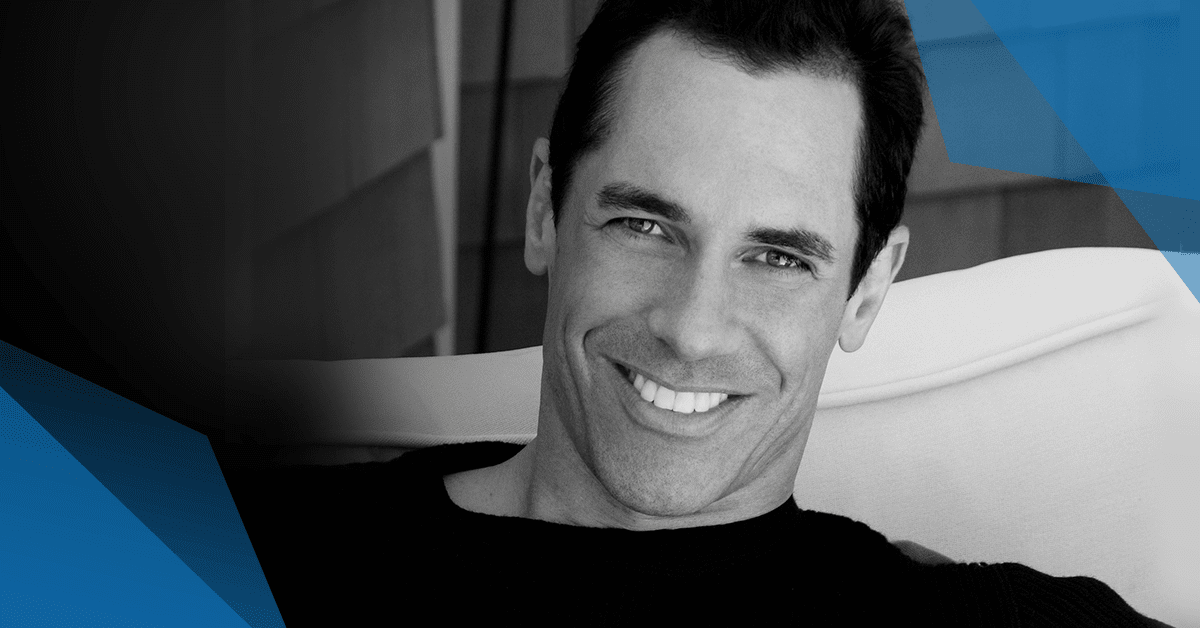In March 2016, I went to New York to write a feature for Men’s Health magazine about a gym that hadn’t yet opened.
Here’s how I began the story:
I’ve seen the future of fitness, and it looks like a construction zone. Which it is, at the moment. But by the time you read this, Peak Perform in Manhattan will be 25,000 square feet of high- and low-concept training equipment, with programming designed by coaches who hold doctoral degrees, the luxurious amenities of a boutique hotel, the business model of a suburban country club, and the technology of a NASA mission.
Okay, sure, the NASA comp is just a bit of an exaggeration. And those amenities probably aren’t coming to your local health club anytime soon. But speaking as someone who once marveled at the genius of the selectorized weight stack on a Universal machine, it’s easy to be awed by the seamless integration of iron and tech described by Peak owner Joe Dowdell as we stand in the middle of what will soon be the gym of the future.
Those paragraphs never appeared in print. Shortly after I wrote them, Dowdell told me the whole thing was coming apart. Of course I felt bad for him, but my first thought was more practical: I had to write a feature about America’s best gyms without the gym that we planned to build the story around.
My part of the saga had a happy enough ending, in that I rewrote the story and got paid. I even wrote a sidebar about some of the cutting-edge equipment Dowdell had planned to install.
But it wasn’t until two years later that I caught up with Dowdell and learned just how devastating it had been. “It was like a divorce,” he told me. “It was part of me, part of my identity. It took a lot to process that. I needed time.”
After consulting with Jonathan Goodman and others, he decided to shift to a new online-training business, rather than have another run with a brick-and-mortar facility.
He also decided he’s ready to share the lessons he learned from his experience, with the hope that others can avoid a few pitfalls of their own.
The best-laid plans …
Dowdell’s first “training facility” was a 400-square-foot corner of his own loft. He opened a 2,500-square-foot studio in 1997, which he named Peak Performance. In 2002 he upsized Peak to a 10,000-square-foot space in the heart of New York City’s “fitness district,” where you’re never more than a block or two away from a yoga studio, a franchise gym, or one of the new boutique clubs focused on a single mode of cardio training.
Peak succeeded, he says, because “at the time, it was so far beyond what anybody else had out there.” That edge allowed him to train celebrities from every walk of life that can make someone rich and famous: actors (Gerard Butler, Anne Hathaway), musicians (50 Cent, Britney Spears), NBA and MMA stars, and “a ton of models.” (Fun with math: At an average weight of 110 pounds, you’d need 18.18 models to reach a ton.)
He also trained a lot of business stars, including some leading tech executives and entrepreneurs. One of them, he told me in 2016, encouraged him to “be the tech leader in the fitness field.”
And one of them was willing to invest a lot of money to make it happen. That was the impetus for Peak Perform, which, despite the shorter name, would be two and a half times the size of Peak Performance and wired for a seamless integration of technology and performance.
Dowdell has never told me the name of the investor or the size of their budget. (Trust me, I asked multiple times.) I got the impression that both were huge. But he did explain what went wrong.
It started with his contractor.
The problems were minor at first, and the project moved forward. But as they got close to completion, the contractor made a mistake, and realized he would have to fix it at his own expense—a cost he apparently couldn’t afford. It also delayed his final payment from Dowdell, which choked off his cash flow.
He walked off the job, and pulled a legal maneuver to prevent anyone else from finishing the work. “Construction is a dirty, dirty, dirty game, especially in New York,” Dowdell says. His own lawyers eventually prevailed, and he was able to hire another contractor to complete the job.
But the delays caused Dowdell’s expenses to skyrocket. Because he had closed Peak Performance and donated all the equipment, he had no money coming in, while truckloads went out to his employees, his trainers, his lawyers and advisors. His trainers held onto their clients by working with them at different gyms throughout the city, which was another cost no one had anticipated.
That’s when the investor’s team decided they’d had enough. “It was too big a headache,” Dowdell says. “For me, it was the biggest project ever. But for them, it was like a grain of sand in an hourglass. It just wasn’t important enough.”
The long, painful recovery
You’d think the bad part of the story ends there, with Dowdell picking up the pieces and moving on. But when it comes to gym ownership pitfalls, the pieces kept dropping for months. “I had to deal with everything, from my employees, to my trainers, to our clients, to all the people working on the project,” he says. “I was holding this big bag of dog poop. I didn’t even think about the impact it was going to have on me personally.”
When that realization finally hit, Dowdell says, it hit hard. A former model, he’d spent 20 years building his brand as a trainer to the stars, and his gym’s brand as the place to go for cutting-edge training. Now there was nobody to train, and no place to train them.
At that point, he says, “I just needed time. I needed to get away from the fitness business, allow myself to heal.”
The process started with a two-week trip to Bali for a friend’s wedding. (The trip was already booked and the flights paid for.) When he got back to training clients, in the fall of 2016, he considered all the things he didn’t want to do.
He obviously didn’t want to build another brick-and-mortar business. Nor did he want to be anchored to a single physical location, with most of his income derived from it. But mostly, he says, “I wanted something I could scale massively,” giving him a chance to work with people who, because of geography or cost, couldn’t train with him in person.
The only way to do that was online. He spent the next year developing training systems and content for his new website, including pre-recorded client-education webinars and calculators to help clients figure out their ideal starting point.
The goal is to replicate what he would do when training someone in person. To Dowdell, that goes beyond providing workouts. “It’s not just about how much you know, it’s about how you deliver that experience,” he says. “How do you want it to come across to consumers? I tend to look at things first from a 10,000-foot view, and then progressively dial down to the small things, and how you make those small things better. You don’t want to start at the small thing, because then you never get to the 10,000-foot view.”
The lessons learned
Although he’s out of the gym business, at least for now, Dowdell has a lot of advice for those who want to jump in, or to expand their current business.
1. Pick your team
Depending on the size of your project, and the complexity of your location, consider the following:
- Business advisor: Dowdell recommends consulting one before any major move.
- Lawyer: If you’re building a new space, or significantly remodeling an existing space, you want a specialist who understands both real estate and construction.
- Expediter: In a big city, with a lot of red tape, you need someone who knows how to navigate it.
2. Make three budgets
As in any negotiation, you never reveal what your actual budget is. Instead, Dowdell says, you need to keep three numbers in your head:
- What you tell the contractor you’re willing to spend.
- What you’ll agree to spend if or when his estimate comes in higher than the number you gave him.
- What you may have to spend, if things go sideways.
3. Make two timelines
- How long the project should take.
- How long it can take.
Make sure you have a plan for either possibility.
4. Avoid unforced errors
Changing your mind is hugely expensive, Dowdell says. Contractors will charge a fee for each adjustment, and if it’s a big change, it will blow up your timeline along with your budget.
5. Ask about ADA compliance
Somebody on your team—adviser, lawyer, contractor—should understand what’s required for accessibility under the Americans with Disabilities Act. You don’t want to get near the finish line and find out you’re missing a wheelchair ramp or a handicapped-accessible shower stall.
6. Gird your loins
“Working with contractors is a cat-and-mouse game,” Dowdell says. Shady ones might try to convince you they’re farther along than they are so they can get paid sooner. Then they’ll turn around and use your money to start their next project.
And if things start to go bad, well, desperate people do desperate things. They’ll make your life miserable, just because they can.
Which brings us to Dowdell’s final point.
7. Keep as much control as possible
When Dowdell opened the original Peak Performance, he financed it with his own money. When he expanded in 2002, quadrupling his space, he used a combination of his own funds, a bank loan, and a loan from a family member.
But when he built his dream gym, with that groundbreaking integration of technology into every section of the gym, he relied on an investor—one with deep pockets but also massive commitments to much bigger projects around the globe. You go from being the biggest fish in your own pond to a minor organism in a bottomless ocean.
“Once you’re dealing with an investor, you no longer have all the control,” Dowdell says. “To play at that level, to go from a mom-and-pop shop to something you can scale, it changes your business. It’s a whole different model.”
Lots of gym owners have made that work, and if it hadn’t been for one disreputable contractor, Dowdell would be among them.
That leads to yet another lesson, one that nobody anticipated back in early 2016, when Dowdell’s gym of the future still had a future:
If you’re good at what you do, there’s always another way to do it.










